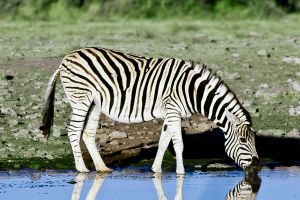Jellyfish are fascinating and mysterious creatures that have inhabited the world's oceans for millions of years.
They are invertebrates that belong to the phylum Cnidaria, which includes corals and sea anemones. Jellyfish are known for their distinctive bell-shaped bodies and long trailing tentacles, which they use to capture prey and defend themselves against predators.
Jellyfish come in a variety of shapes, sizes, and colors, with some species being as small as a fingernail, while others can grow to be several feet in diameter.
Their bodies are made up of a soft, gelatinous material called mesoglea, which is mostly water. They have no bones, brain, or heart, but they do have a simple nervous system that allows them to respond to their environment.
There are more than 2,000 known species of jellyfish, ranging in size from a few millimeters to over two meters in diameter. They can be found in all of the world's oceans, from the surface to the deep sea, and they come in a variety of colors and shapes.
Jellyfish are also known for their unique life cycle. They begin as a larva that settles on a substrate and grows into a polyp, which looks like a tiny sea anemone attached to the seafloor or other surface.
The polyp then develops into a medusa, which is the familiar bell-shaped form that we associate with jellyfish. The medusa can reproduce sexually or asexually, depending on the species, and will eventually die, releasing its eggs or sperm into the water to begin the cycle again.
Jellyfish are found in every ocean on Earth, from the surface waters down to the deep sea. They are most commonly found in warm, shallow waters near the coast, but some species can tolerate colder temperatures and are found in polar regions.
They are also able to adapt to changes in their environment, such as fluctuations in water temperature and changes in the availability of food.
Jellyfish are important members of the marine ecosystem, but they can also have a significant impact on other marine life and human activities. They are known for their ability to reproduce rapidly, and in some cases, their populations can explode, creating what is known as a "jellyfish bloom."
These blooms can have negative impacts on the environment by competing with other marine organisms for food and space, and they can also cause damage to fishing gear and other equipment.
Jellyfish also can deliver a painful sting to humans and other animals. While most jellyfish stings are not life-threatening, some species can be dangerous, and even deadly.
In addition, their presence in coastal waters can discourage people from swimming and other water activities, which can have an economic impact on local communities.
Despite their potential negative effects, jellyfish are still fascinating creatures that are worth studying and understanding.
By learning more about their biology, behavior, and ecological role, we can better understand how they fit into the complex web of life in the ocean and how we can minimize their negative impacts while preserving their important role in the ecosystem.


